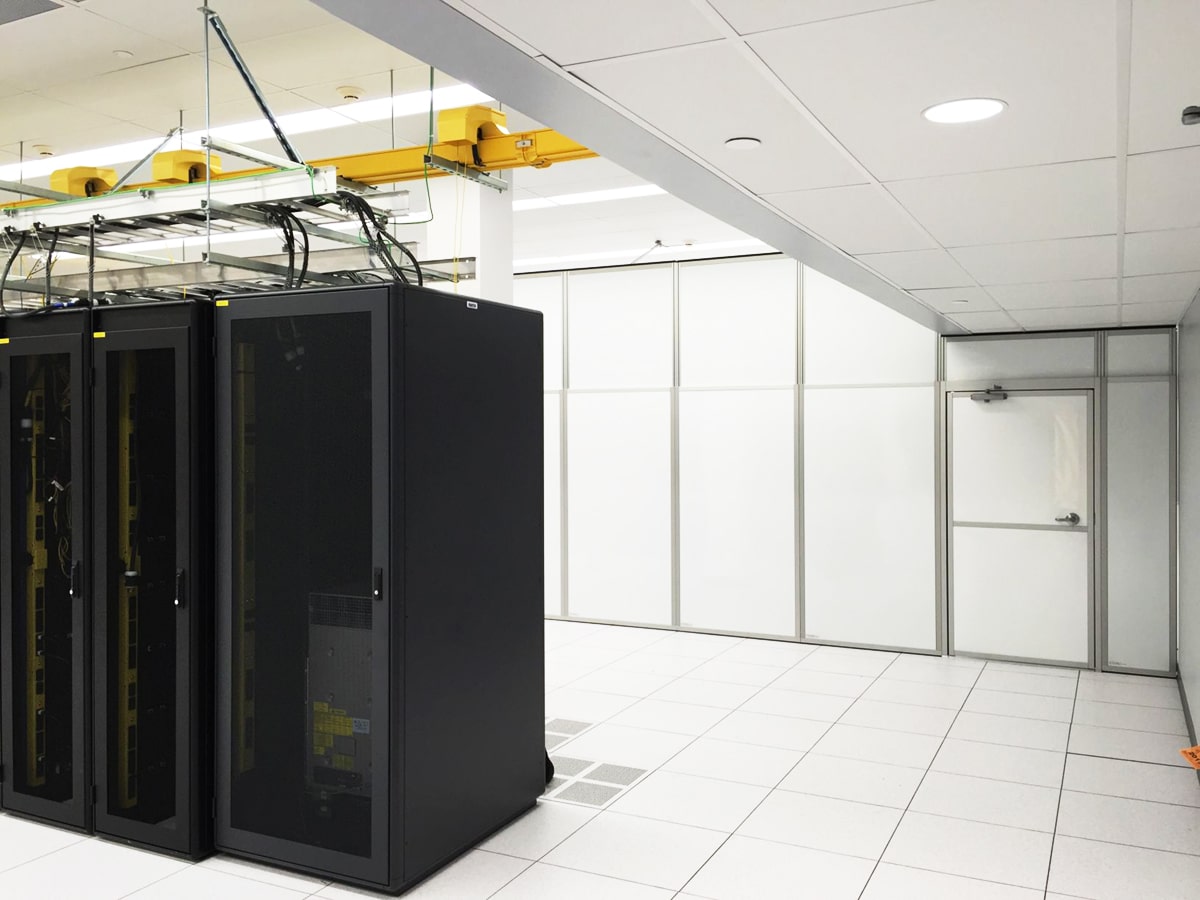
When separating spaces in a construction project, the traditional go-to is the demising wall—a structural feature that defines tenant boundaries and satisfies code. But what happens when you need flexibility, speed, or a clean separation that doesn’t need to last forever?
Enter: reusable temporary wall systems.
In this article, we’ll break down how STARC’s modular, code-compliant solutions stack up against demising walls by answering five key questions construction professionals ask when evaluating temporary wall options, especially in mission-critical spaces like data centers.
1. What Is a Demising Wall?
A demising wall in a data center is a physical barrier or partition wall that separates different tenant spaces, operational zones, or functional areas within the facility. When used for environmental control, a demising wall helps maintain separate cooling, humidity, and airflow conditions in adjacent rooms.
2. When Are Demising Walls Used in Construction Projects?
Demising walls are common in multi-tenant commercial and technical facilities, including:
- Data centers (e.g., colocation environments)
- Office complexes
- Retail centers
- Warehouses
They’re usually installed during initial build-outs or tenant improvements. Because they are structural and code-driven, they often involve inspections, permitting delays, and, when modified, labor-intensive demolition or reconfiguration.
3. When Should You Choose a Reusable Temporary Wall Over a Demising Wall?
Reusable wall systems aren’t a legal substitute for code-required demising walls, but they’re an ideal solution in situations where space needs to be separated temporarily, such as:
- During renovations or reconfigurations where speed and flexibility are critical
- For early-phase containment ahead of final wall placement in fit-outs
- In data centers, for segmenting hot aisles or enabling phased turnover of white space
- To create secure, temporary separations for onboarding new colocation tenants
Why choose reusable?
- Faster installation with no framing, taping, or inspections
- No permitting delays for temporary use
- Clean, professional appearance that aligns with modern data center aesthetics
- Easily reconfigurable for evolving project phases
4. How Does a Temporary Construction Wall Compare to a Demising Wall on Technical Performance?
| Feature | Demising Wall | STARC Temporary Wall |
| Installation Speed | Slow (days/weeks) | Fast (hours) |
| Reusability | None | Yes (hundreds of times) |
| Flexibility | Fixed structure | Moveable, reconfigurable |
| Fire Rating | Often required | ASTM E84, E119 compliant |
| Appearance | Varies | Real wall aesthetics |
| Noise Control | Good | Up to 50% noise reduction |
STARC walls exceed expectations not just in usability but in technical performance, offering fire-rated panels (ASTM E84, E119) that help data center teams meet stringent safety requirements while speeding up build-outs.
Download Our Guide — Fire Safety & Temporary Walls: One Critical Question
5. Are Temporary Walls a Good Fit for Data Centers?
Absolutely. Temporary modular walls from STARC are designed to support data center-specific needs:
- UNDISRUPTED Fit-outs: Segment data halls for phased commissioning.
- UNDISRUPTED HAC & Testing: Move or reinstall barriers quickly for HVAC system testing.
- UNDISRUPTED Reconfiguration: Reroute spaces without disturbing existing tenants.
- UNDISRUPTED Planet: Reusable walls reduce waste and support sustainability goals.
By choosing temporary construction walls that move at the speed of data, project teams can eliminate bottlenecks, protect uptime, and maintain professional standards from start to finish.
Need help determining if STARC is right for your project?
Contact us to explore how temporary walls can save time, protect uptime, and simplify compliance in your next data center build.
